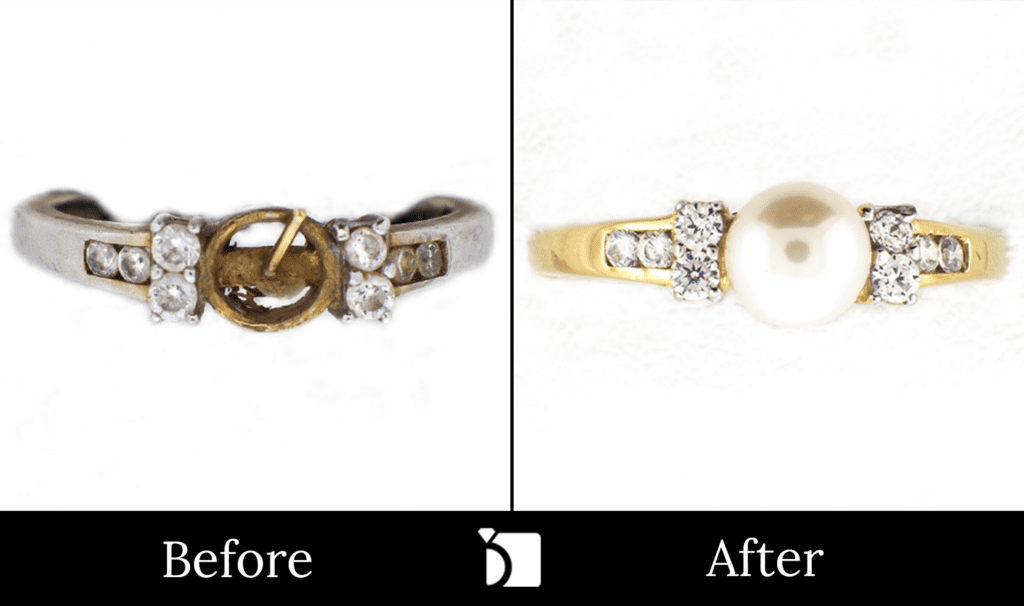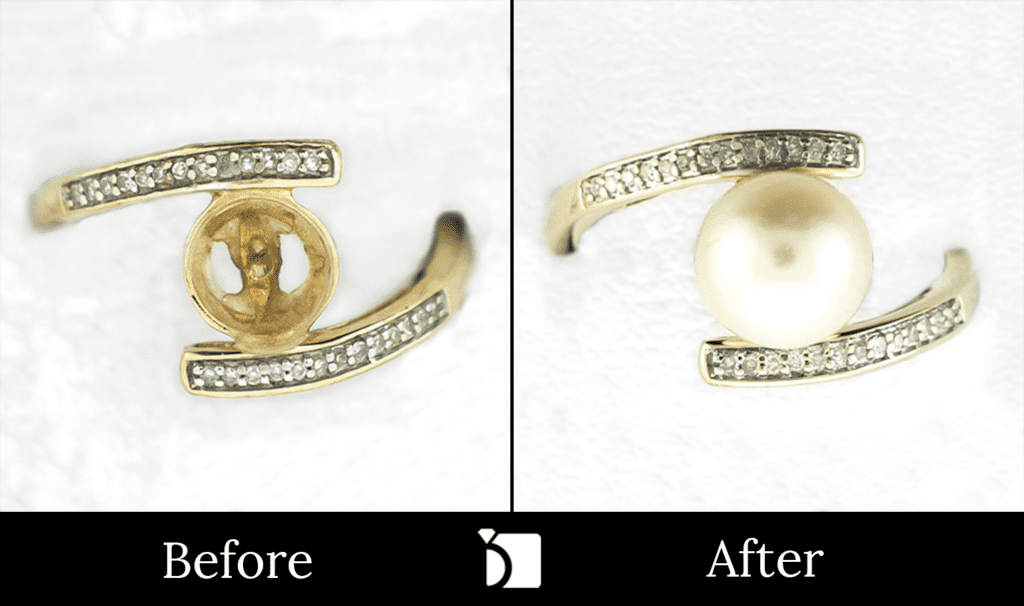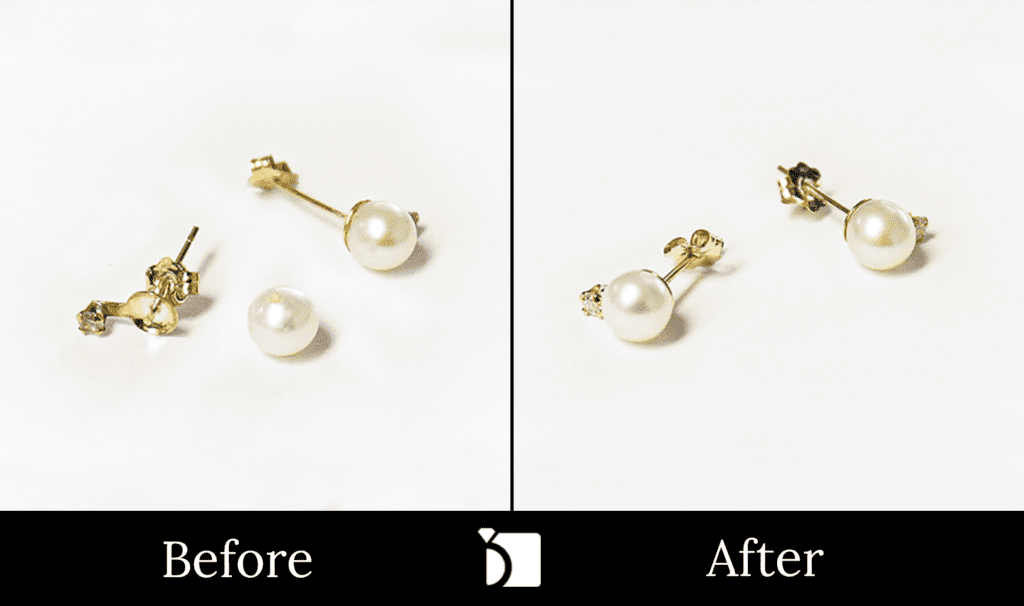
Everything you need to know about Pearls
Discover the timeless elegance of pearls with our Ultimate Pearl Guide – your definitive resource for everything you need to know about these luminous treasures of the sea!

The Ultimate Guide to Pearls
Deep Diving Into Everything About Pearls
Pearls, the treasures of the sea, are nature’s way of transforming an irritant into something truly exquisite. Formed when a foreign particle—such as a grain of sand or a tiny shell fragment—enters an oyster or mollusk, the creature responds by coating it with layers of a luminous substance called nacre. Over time, these layers build upon one another, creating the smooth, iridescent beauty that has captivated civilizations for centuries.
At My Jewelry Repair, our appreciation for the elegance and mystique of pearls inspired us to create this Ultimate Pearl Guide. Whether you’re looking to purchase your first strand, care for a beloved heirloom, or simply deepen your knowledge, we hope this guide serves as a comprehensive and insightful resource.
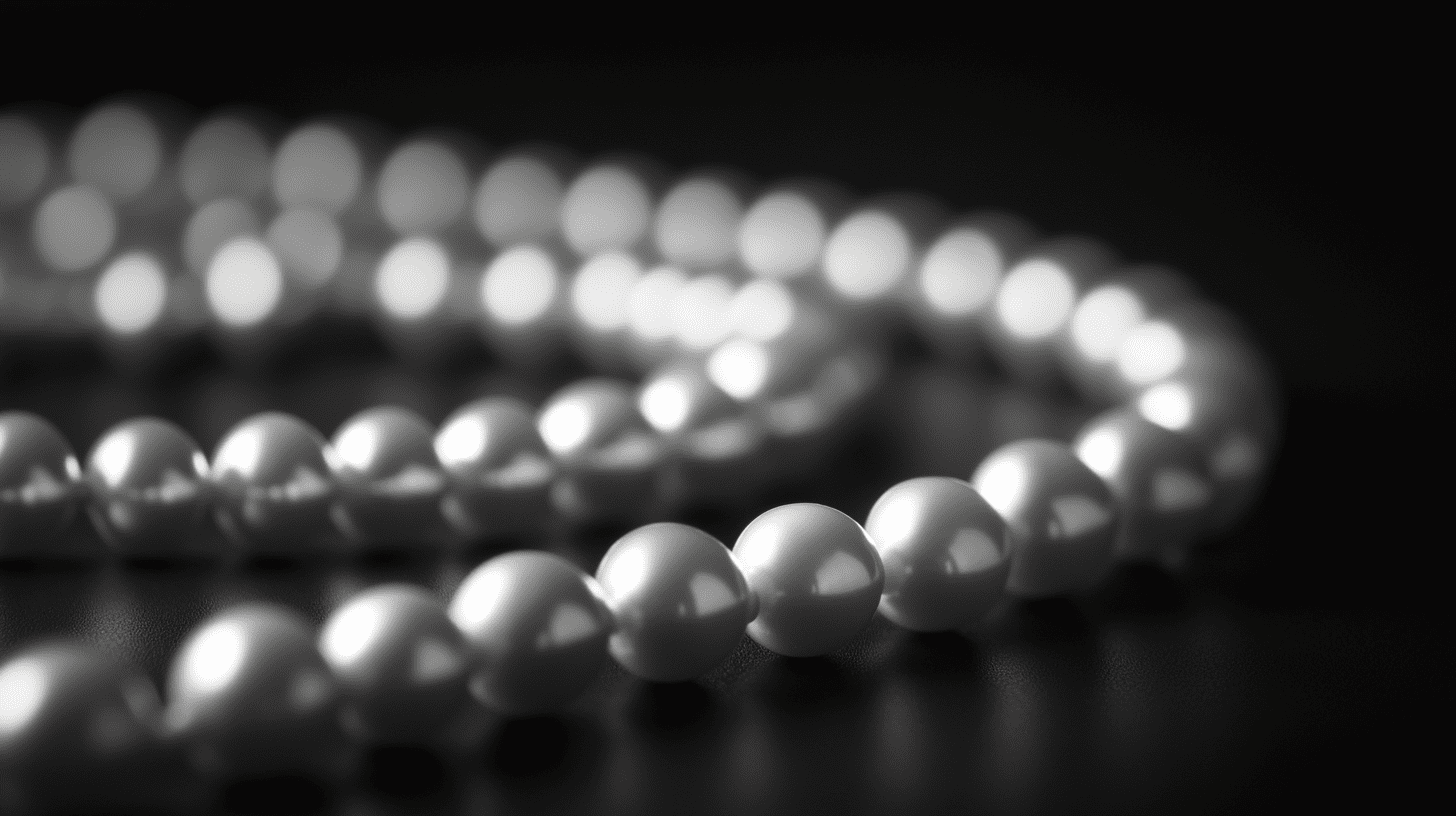
What Should We Be Looking For in a Pearl?
Did you know that pearls are probably the most unique of all birthstones and gemstones in general, as they are the only gemstones that are made from a living organism?
Quality Characteristics of Pearls include:
- Luster
- Color
- Shape
- Surface
- Size
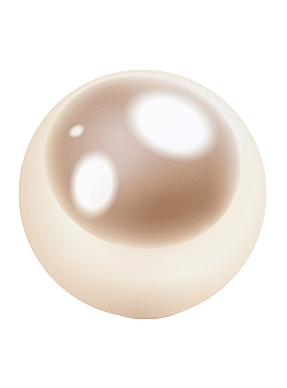
The closer a pearl comes to being perfect in these characteristics, the more valuable the pearl.
Types of Pearls
The pearl gemstone comes from many body of waters globally, including oceans, lakes, and rivers. These organic gems grow from the inside the tissue of living creatures either in saltwater or freshwater. These creatures, known as mollusk, could either be an oyster or a mussel, and their pearls are formed from a substance called nacre that is secreted when an irritant, such as sand or a parasite, invades its shell.
There are also two general different types of pearls: natural and cultured.
Natural Pearls
Natural pearls are very rare and extremely expensive, as only one oyster in forty may contain a pearl. A natural pearl is created in the oyster by chance! Natural pearling can be found in the Persian Gulf and the Indian Ocean.
Cultured Pearls
Cultured pearls were developed as a response to the extreme rarity of naturally formed pearls. By seeding an oyster with an irritant, layer upon layer of nacre forms until a lustrous cultured pearl is created. Cultured pearls are frequently bleached and polished for uniform color and shape. Some cultured pearls are dyed or irradiated to achieve to change or enhance the color.
These cultured pearls account for many of the pearls that are on the market today, making natural pearls the rarest, and therefore, the most expensive.
As there are many different environments in which pearls can grow, there is a result of different pearl gemstones in various shapes, colors, and sizes! Pearls can come in colors such as white, silver, yellow, green, blue, brown, pink, purple, and black; because natural black pearls are so rare, these are mostly cultured.
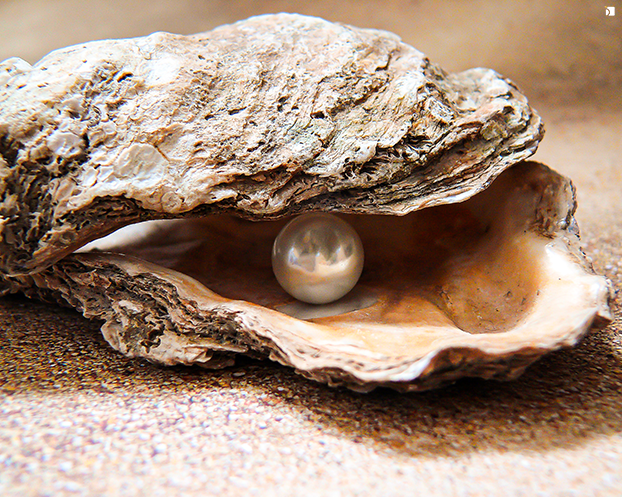
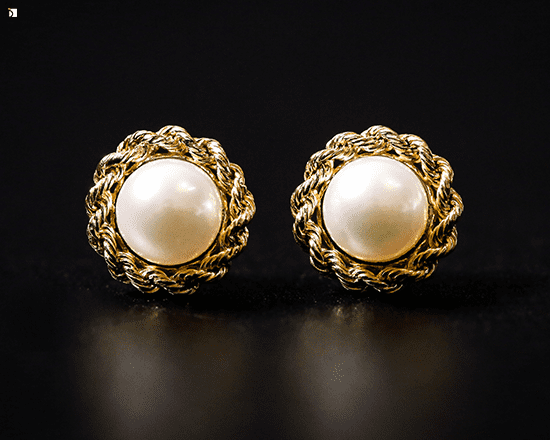
Akoya and Freshwater
The 2 most common types of pearls are Akoya Cultured Pearls and Freshwater Cultured Pearls.
- Akoya Cultured Pearls are cultured in saltwater. Japan is known to produce the highest quality Akoya cultured pearls. They tend to be more expensive than Freshwater cultured pearls since they are less available.
- Freshwater Cultured Pearls are cultured in rivers and lakes primarily in China, They are less expensive than the Akoya cultured pearls since they are more readily available.
Understanding Pearl Grading and Value
Not all pearls are created equal—and understanding what sets one apart from another can help you make confident, informed decisions when buying pearl jewelry. The value of a pearl is determined by several key factors, often referred to as the “Five S’s”: Size, Shape, Surface, Shine (Luster), and Shade (Color).
Luster(Shine) – Luster is often the most important indicator of a pearl’s quality. It refers to the glow or reflection that appears on the surface of the pearl. High-luster pearls have a sharp, bright reflection, almost like a mirror, and are considered more valuable.
Surface Quality – Look for blemishes like spots, bumps, or wrinkles. While very few pearls are completely flawless, pearls with cleaner surfaces are more desirable and fetch higher prices.
Shape – While round pearls are the most classic and often the most expensive, other shapes like baroque (irregular), oval, and button have their own unique charm. Perfectly round pearls are rare and usually command a premium.
Size – Larger pearls are generally more valuable, especially if they maintain good luster and surface quality. Pearl sizes are measured in millimeters, and even a one-millimeter difference can significantly impact price.
Color (Shade) – Pearls come in a spectrum of colors, from traditional white and cream to more exotic shades like black, gold, pink, and lavender. While color preference is subjective, rarer colors like Tahitian black or South Sea gold are often more valuable.
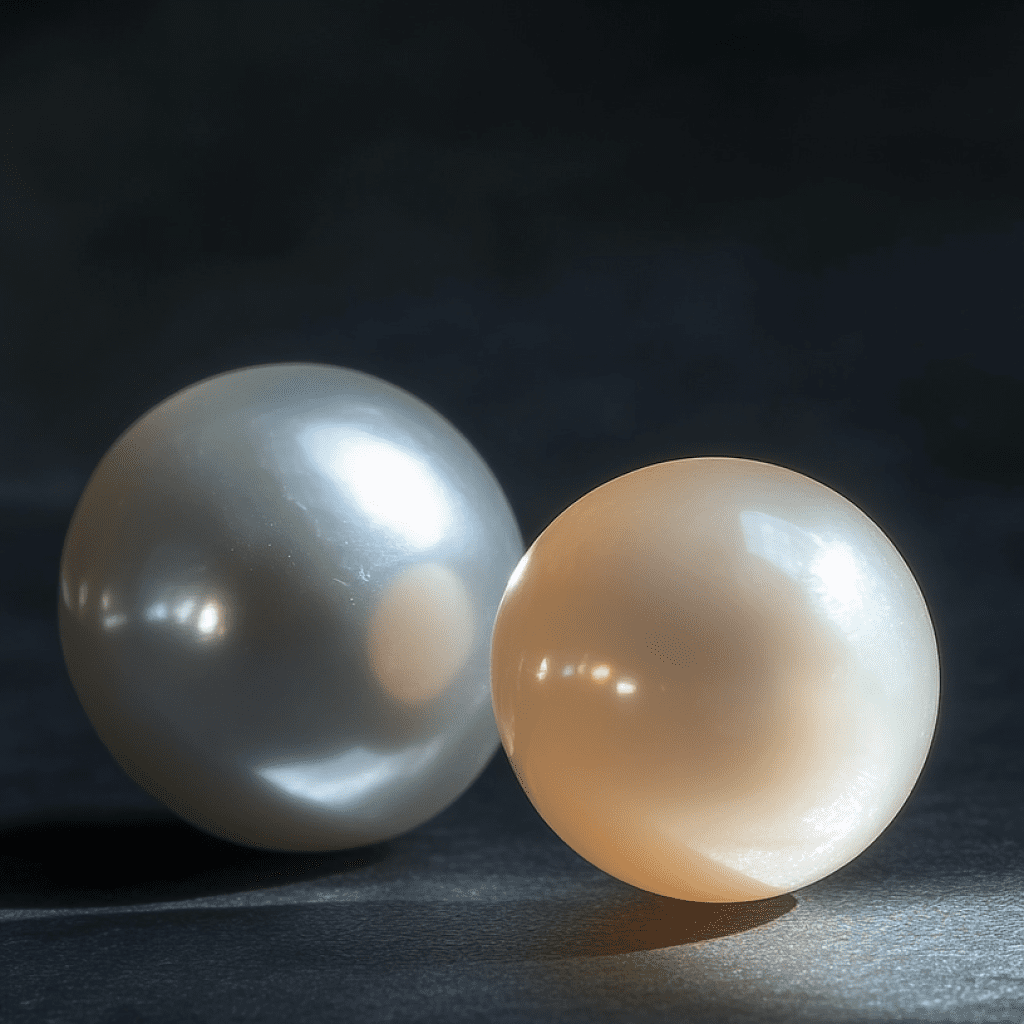

A Brief History and Symbolism of Pearls
Cultural Significance: Rubies in Lore and Legend
The English name of this gemstone “pearl” comes from the French word “perle,” which was originally derived from the Latin word “perna.” This Latin word means “leg,” which is referencing the shape of an open mollusk shell.
But did you also know that the scientific name for the pearl-bearing oysters is “Margaritiferidae,” which comes from “margarita,” which is the Old Persian word for pearl? If your name is Margaret, then this is where your name stems from!
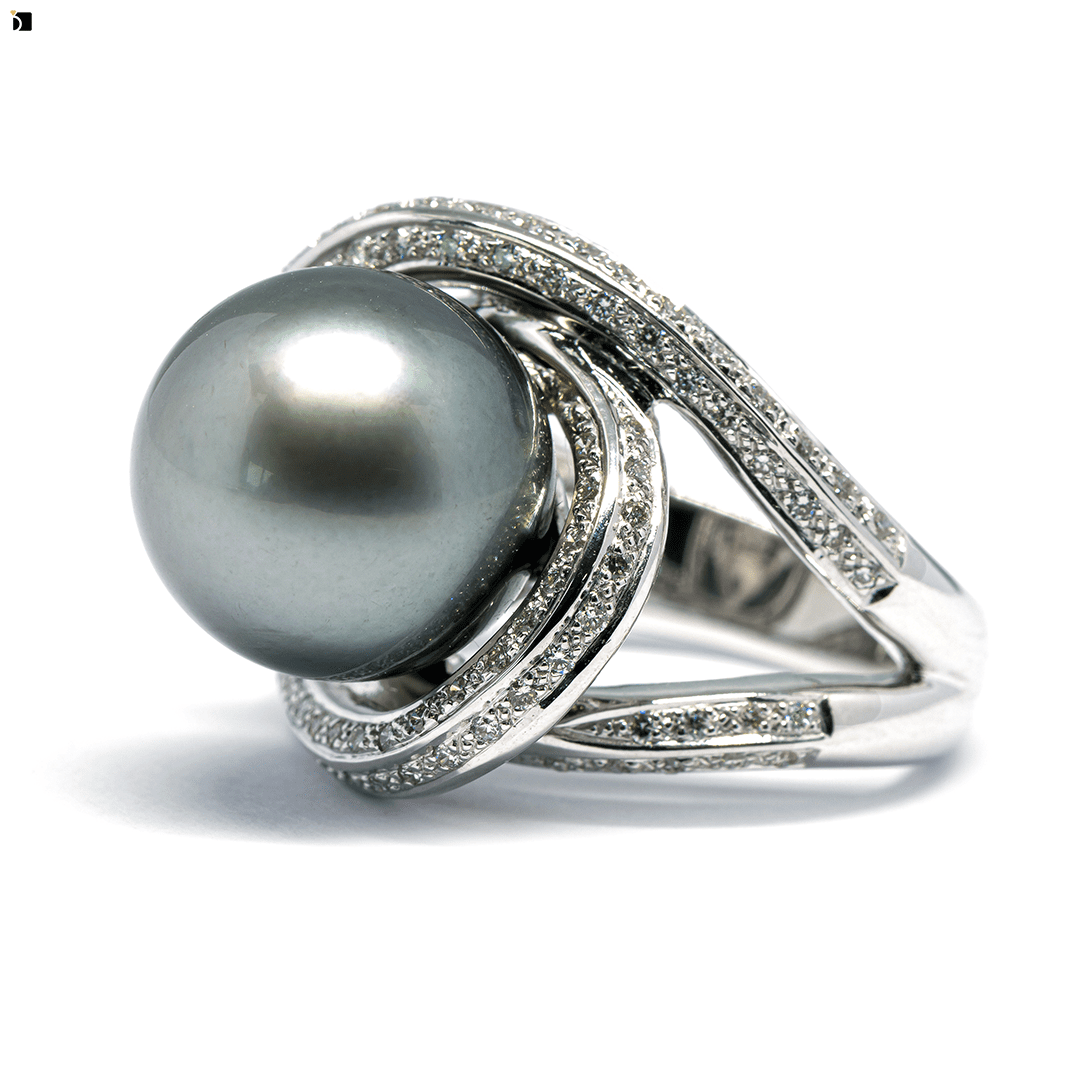
Mikimoto and the Art of Cultured Pearls
As previously mentioned, natural pearls are very rare and extremely valuable, as only one of forty oysters produces a pearl in the natural process. Therefore, in 1893, Kokichi Mikimoto, invented a viable technique for producing hemispherical “cultured pearls” in Japan. Mikimoto helped advance the science of pearl cultivation and has remained synonymous with harnessing the allure of pearls for more than 120 years.
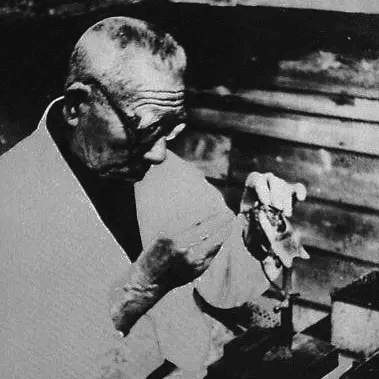
Throughout this time, Mikimoto has become the world’s foremost producer of fine cultured pearls, not to mention a global leader in exceptional jewelry design incorporating these top-shelf gems of the sea.
Pro Tip: If someone happens to be selling a Mikimoto piece, make sure that they have a certificate of authenticity.
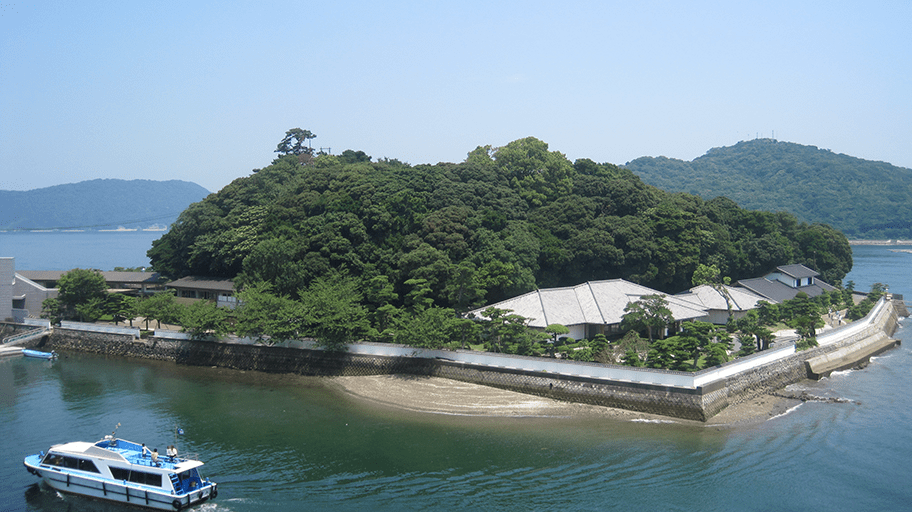
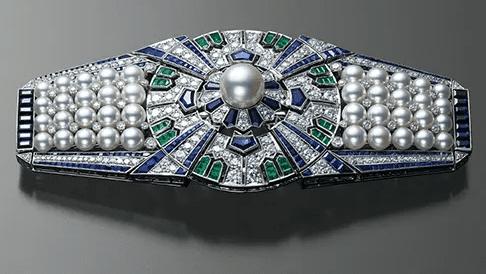
The Symbolism, History, and Care of Pearls
These beautiful gemstones are known to symbolize wisdom, integrity, purity, loyalty, and serenity. In ancient times, they were also associated with healing properties to promote serenity, protection, security, confidence, and enlightenment, which ties in very similarly to its current symbolism. Pearl gemstones were a sign of high status and wealth in ancient Rome, and were used as protective amulets by some knights during the crusades.
Pearls have a hardness of 2.5 to 3.0 on the Mohs scale of hardness. To put this in perspective, quartz has a hardness of 7 – 7.5 and are present in the particles of dust seen floating in the air and settling on uncleaned objects in your home. These particles have the hardness that is able to remove the polish from your table and the finish from your car. Diamonds have a hardness of 10, which is the hardest gemstone, and the softest includes talc, which is a gemstone that even your fingernail can scratch.
These minerals can only be scratched by the hardness level above it, so pearls most definitely need special care and maintenance to keep it looking as pretty as possible.
The Most Famous Pearl – La Peregrina
The La Peregrina Pearl, whose name means “The Pilgrim” or “The Wanderer” in Spanish, is one of the most storied and iconic pearls in the world. Discovered off the coast of Panama in the 16th century, this perfectly symmetrical, pear-shaped pearl passed through the hands of Spanish royalty, including Queen Mary I of England, and later adorned European queens and aristocrats for generations. Its legend only grew in modern times when actor Richard Burton famously gifted it to Elizabeth Taylor in 1969. Enchanted by its beauty and legacy, Taylor had it redesigned by Cartier into an elaborate necklace with rubies, diamonds, and additional pearls. Combining centuries of history with Hollywood glamour, La Peregrina remains a dazzling symbol of elegance, romance, and royal intrigue.
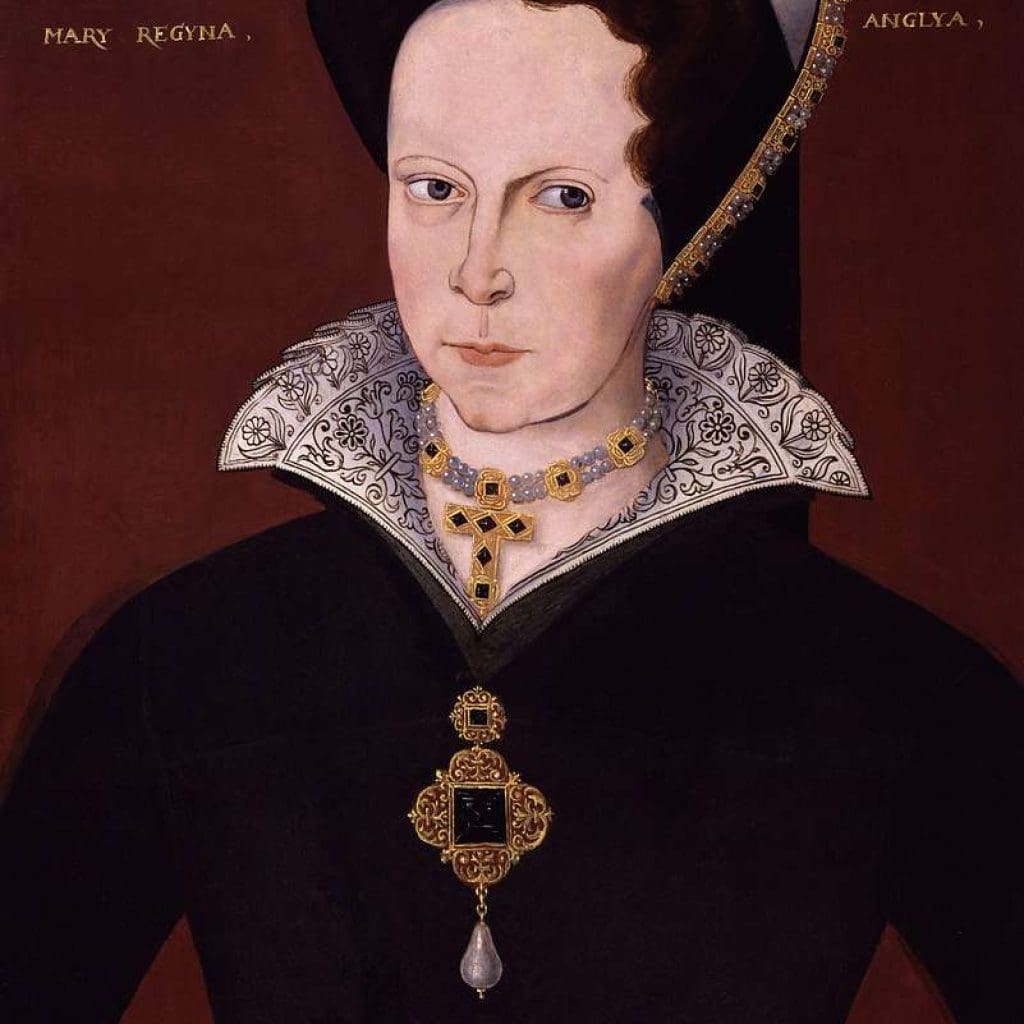
Types of Pearl Jewelry
Pearl jewelry is available in many different styles and designs:
- Pearl Rings
- Pearl Earrings
- Pearl Necklaces & Pendants
- Pearl Bracelets
- Pearl Brooches
The most traditional styles of pearl jewelry are the classic Pearl Strand and Pearl Stud Earrings. These pearls definitely require a skillful jeweler to restring them.
Please visit our Pearl Restringing Services page to receive premier restringing services and have your pearls restored back to its pristine condition.
Alternative Gemstone Options
Our Professional Parts Sourcing Team is able to source out any type of pearl of any color, shape, size, and type, including natural or cultured. If you wish to source out an alternative gemstone to pearl, we recommend looking into the other June birthstones, which are Alexandrite and Moonstone.
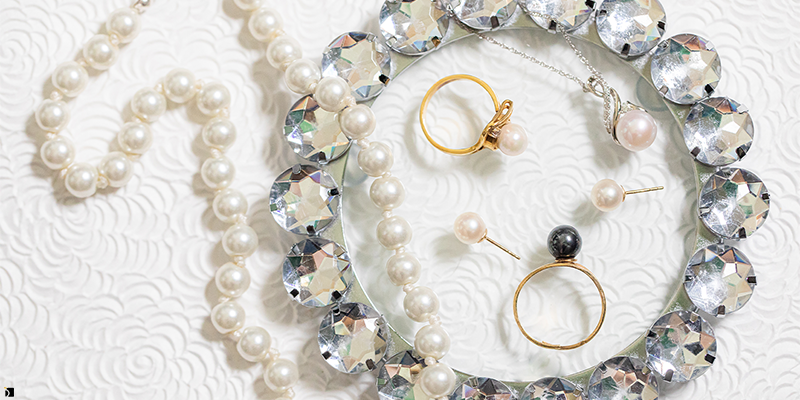
How to Properly Care for Pearl Jewelry
Keeping the Sparkle and Brilliance
Thinking about restoring a loved one’s sentimental birthstone piece? You’re in the right place to restore their precious memories.
It is recommended to have your pearls serviced and restrung by professional and experienced jewelers, just like the ones that we have here at My Jewelry Repair. However, in order to have your pearls looking as good as possible on a daily basis, there are several steps that you need to consider while caring and maintaining your pearl jewelry.
Pearl Jewelry Care and Maintenance
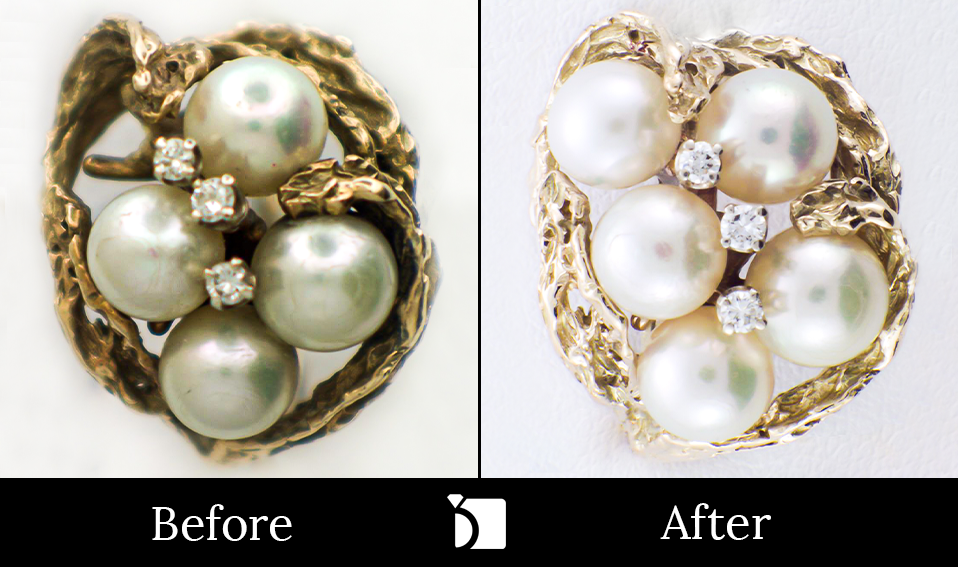
Proper care for your pearls is very important since they are an organic gemstone that is vulnerable to acid, alkaline and extremes of humidity. To protect your pearls and preserve their luster, avoid contact with cosmetics, hair spray, or perfume.
Always put on your pearls as a final touch, after applying cosmetics, perfumes, and hair spray. Pearls can also be damaged by perspiration, so always wipe them with a soft damp cloth before storing them.
Pearls also have a soft surface, and can easily be scratched. Store them away from other jewelry and use a protective jewelry pouch when carrying them. Pearl strands should be restrung as part of the basic care and maintenance, the frequency depends on how often they are worn.
If you would like information on our pearl jewelry services, please click here.
Resources:
- ²Mikimoto Pearl Island, Japan by Joel Abroad, July 2010: https://www.flickr.com/
- ³Mikimoto Pearls Piece: https://www.mikimotoamerica.com/
- ⁴Queen Mary I Wearing the La Peregrina Pearl Necklace by itoldya420: https://itoldya420.getarchive.net/
- Pearl Birthstone Information: https://www.americangemsociety.org/
- June Birthstone Information: https://www.gia.edu/
- June Birthstone Information: https://www.gemsociety.org/
Originally Published November 2, 2016, Updated and Revised May 5, 2025

Revive Your Treasured Pearl Jewelry
Premier Pearl Services at My Jewelry Repair
Are you looking to restore a beloved piece of pearl jewelry? You’ve come to the perfect place to bring cherished memories back to life.
Pearls exude timeless elegance, but their delicate nature makes them susceptible to wear over time. Whether you’re dealing with a dull, discolored, or damaged pearl, we take the restoration of your precious jewelry to heart. No matter the issue, we are dedicated to ensuring your pearls regain their original luminous beauty.
Our team of specialists is skilled in carefully sourcing high-quality pearls to match your treasured piece. We understand that each pearl is unique, requiring meticulous attention to detail. With our Professional Pearl Sourcing service, we ensure every replacement pearl is the perfect fit in size, color, and luster, restoring your jewelry to its former brilliance.
Explore our Gemstone Replacement Services page to learn more about how we can help restore your pearl jewelry to its former glory.
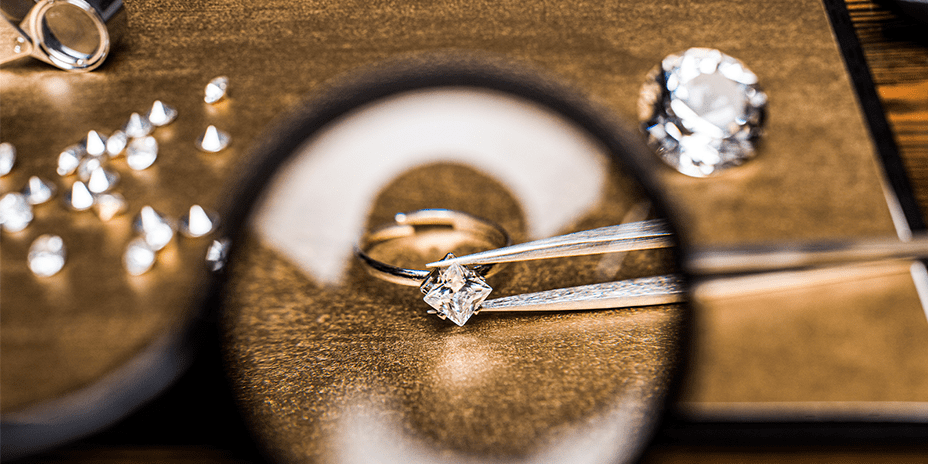

Explore the Magic of Our Pearl Services!
We are proud members of the

Our team includes gemologists certified by


